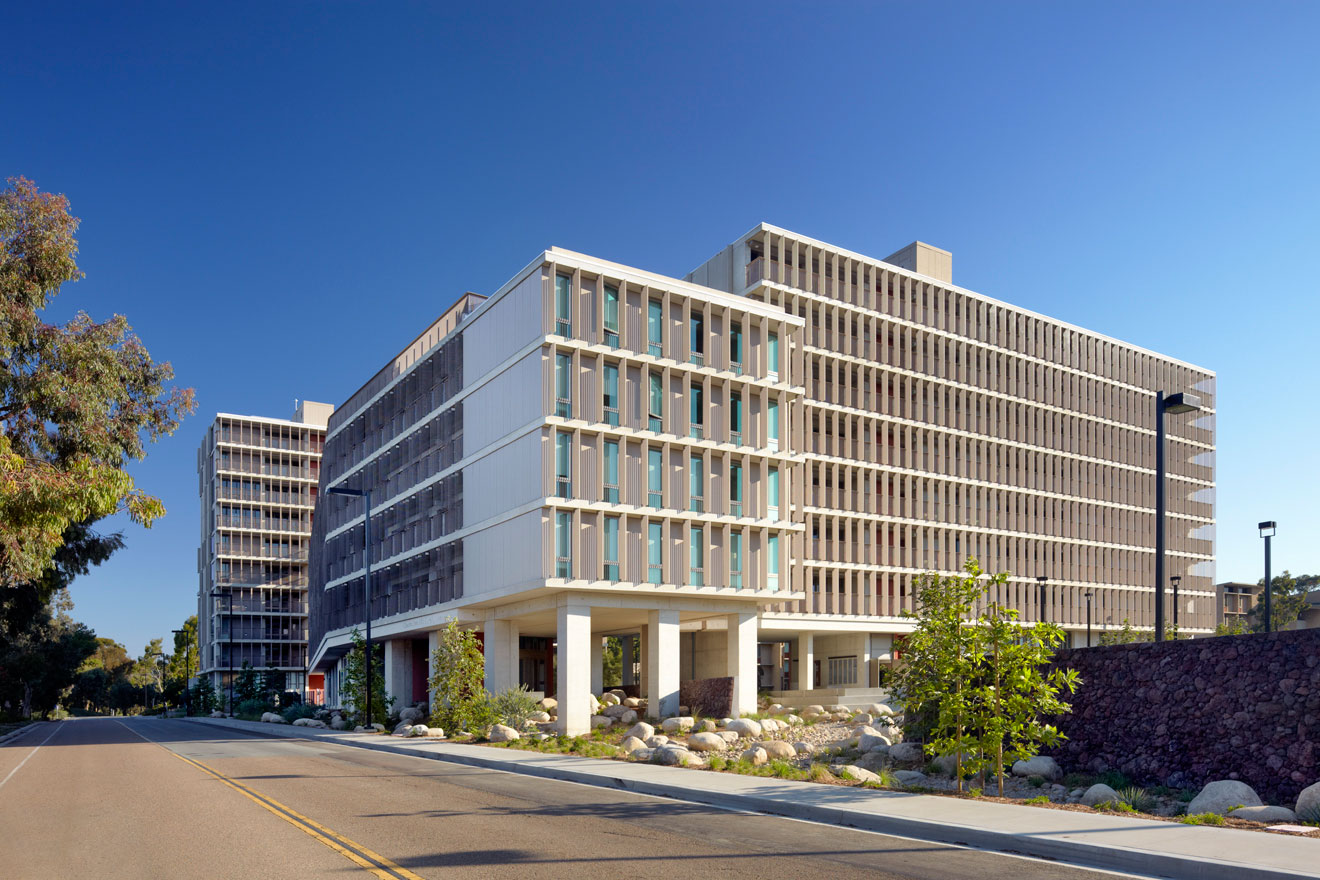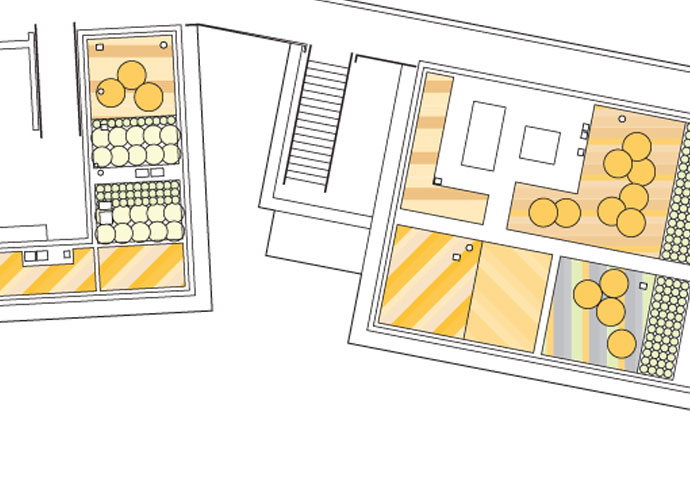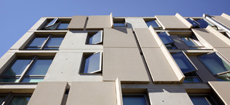Apartments Named for Greenhouse Effect Scientist Achieve LEED Platinum
The Keeling Apartments are cooled naturally with ocean breezes, overhangs, and screens for sun control.
© Tim Griffith
The Charles David Keeling Apartments at UC San Diego have been awarded LEED-NC (Leadership in Energy and Environmental Design for New Construction) Platinum certification from the United States Green Building Council, making the building the first LEED Platinum student housing in the University of California system. It is also the first new building at UC San Diego to receive a Platinum rating—the highest LEED certification level that can be achieved.
“The entire team worked mightily with the client to design every increment and system so that the complex could reach this high pinnacle,” says James Timberlake, who served as lead design partner. “It is a pilot project for UC San Diego in many ways, and we hope it serves as a model for environmentally responsible student housing not only for the UC system, but for colleges and universities across the country.”
The apartments utilize a suite of tactics to address Southern California's pressing environmental challenges of storm water management, water scarcity, and carbon emissions. Mark Cunningham, Executive Director of Housing and Dining Services at UC San Diego, said, “This is a great achievement that reflects UC San Diego's broad goal of becoming one of the most sustainable campuses in the country, and it aligns perfectly with the world-renowned research of Dr. Keeling.”
The most significant reduction of energy comes from using natural cooling from ocean breezes instead of mechanical cooling. The effectiveness of the buildings' shape and arrangement to capture prevailing winds was verified through computational fluid dynamics (CFD) to analyze air movement. Wind tunnel testing was used to ensure that the window size and unit design would provide occupant comfort without using air conditioning.
Heating efficiencies are achieved by thermal mass, and by an innovative backward-constructed rainscreen and air barrier exterior wall that reduces heat loss and water vapor infiltration. Any necessary mechanical heating is provided by a localized arrangement of individually controlled radiant panels. Lighting energy demand is largely met by daylighting and is complemented in public spaces with occupancy-controlled lighting systems. On-site renewable energy comes from a rooftop photovoltaic array. The PV system is the first at UC San Diego to be funded through San Diego Gas and Electric's innovative lease program.
Water, a scarce resource in Southern California that requires significant energy to transport, is managed with a comprehensive strategy of conservation and reuse. Conservation measures include water-efficient landscaping and plumbing. On-site wastewater recycling, a pilot project for the UC system, provides landscape irrigation water at grade and for the planted roof. Stormwater flow into the Pacific Ocean is remediated with a system of landscape bioswales and retention basins that reduce stormwater quantity, delay peak water flow, and control flooding in this region of the campus, with the added benefit of reducing erosion of fragile coastal scrub arroyos, a particularly threatened ecosystem.
“We were all challenged by UC San Diego leadership to use the campus as a ‘planet first' climate research tool, to translate theory into remarkable spaces,” says Martin Poirier, FASLA, the principal designer with Spurlock Poirier Landscape Architects. “They say ‘it never rains in southern California,' but when it does, it is torrential. Instead of flowing through a pipe to the ocean, particulate-laden storm water run-off is filtered through the landscape. This cleansing process is made visible as beautiful, ephemeral streams on the site.”
The buildings are constructed with highly crafted, cast-in-place concrete that is left exposed inside and out. Industrial fiberglass grating was cleverly used for sunshades and railings for its durability in marine environments, and because it does not contribute to solar heat gain. The material selections carry the long-term benefit of lower maintenance and longer replacement intervals, resulting in reduced costs and associated energy for the school.
Since opening in 2011, the project has been recognized with an Award from the American Society of Civil Engineers for its water conservation and treatment systems, and was named Project of the Year by the American Public Works Association.
The Platinum certification of the Charles David Keeling Apartments is the result of a holistic design process that included:
Client: University of California, San Diego
Architect: KieranTimberlake
Construction Manager: Swinerton Builders
Landscape Architect: Spurlock Poirier
Structural Engineer: John A. Martin & Associates
Electrical Engineer: Sparling
Mechanical, Plumbing & Fire Protection: IBE Consulting Engineers
Civil Engineer: Nasland Engineering
Environmental Consultant: Atelier Ten
Lighting Consultant: Candela
Cost Estimating: International Consultants, Inc.
Specifications Consultant: Technical Resources Consultant Inc. (TRC)







